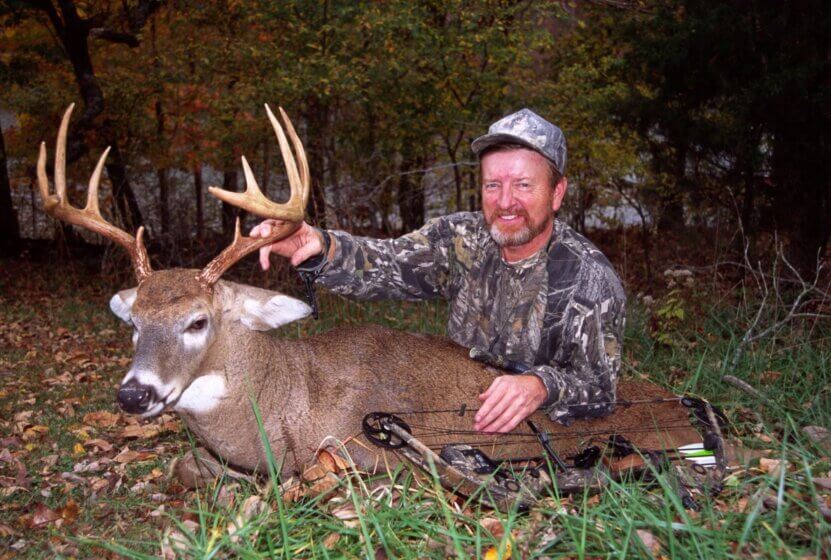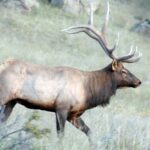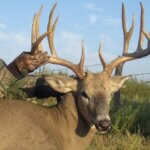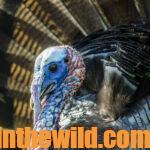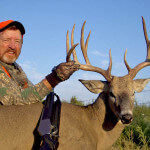Editor’s Note: What magic ingredients do the best deer hunters in the nation use to find their perfect tree stand sites? What can we learn from hundreds of years of deer-hunting experience that will help each of us pinpoint places in the woods where we can take big deer?
John in the Wild has interviewed seven of the nation’s top deer-hunting experts to learn the answers to these questions. We’ll ask each of them to describe the best tree-stand site he ever has hunted from and to name what ingredients have made that particular site so productive that he’s bagged a big buck from that spot in the woods.
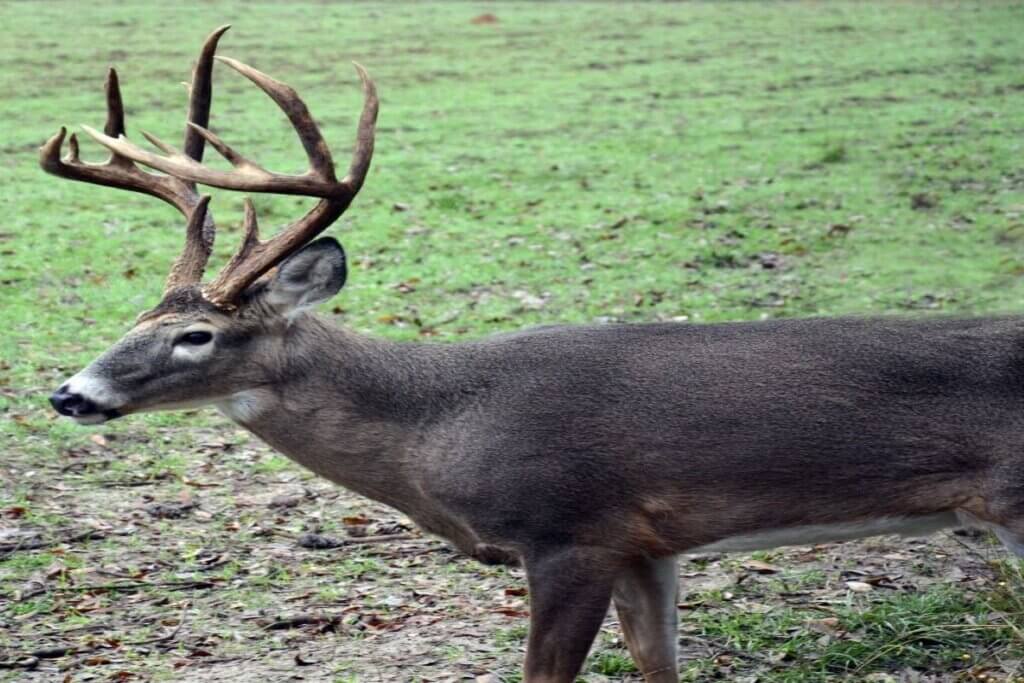
David Hale, one of the co-founders of Knight and Hale in Cadiz, Kentucky, has hunted deer for almost 50 years and also hunts with a video camera much of each deer season.
“I was headhunting (looking for a trophy rack) when I took this big buck,” Hale explains.
“I like to hunt funnels, bottlenecks, and heads of woods where deer have to cross a field from one head of woods to another head of woods. Two woodlots had created a funnel with fields making up the hourglass part of the field. I knew the deer on either side of the bottleneck could hear me rattling or grunting.
Related Deer Hunting Gear
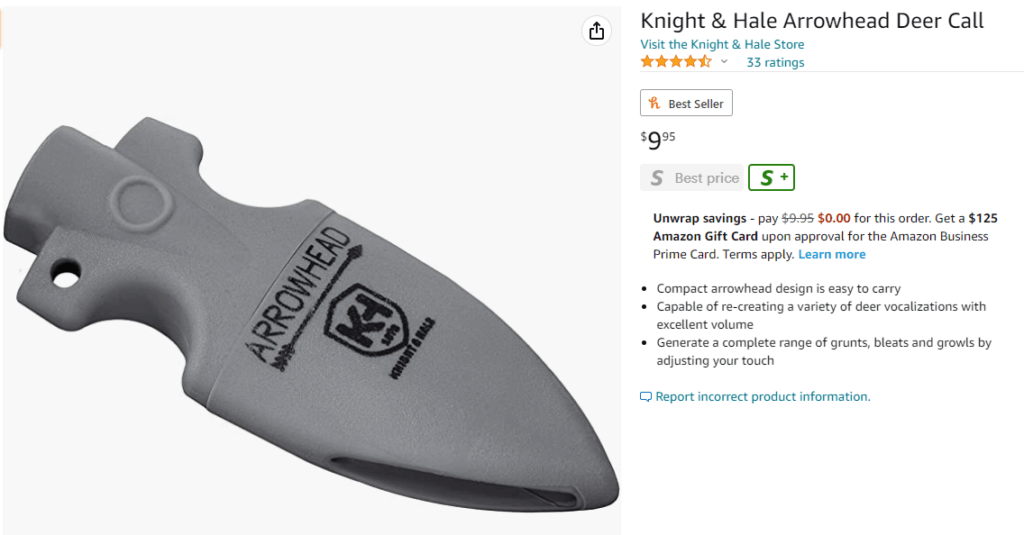
“The other requirement I had for any other stand when I planned to rattle or grunt to deer was that the deer couldn’t see past my stand. I wanted a thicket, a treetop, or some other type of thick cover behind the stand.
Then regardless of which way the deer comes from, he couldn’t see past my stand. That thick-cover area beside your stand is critical to a stand site’s productivity, especially if you’ll be calling. With that thick-cover region below your stand, when you’re calling to a deer, if the deer can’t see the buck that’s calling, he assumes that the deer that’s calling is on the other side of that thick cover which will make him come into where you are.
“I had four elements in my favor when I picked this stand site. I:
- “was hunting a bottleneck that concentrated deer through a narrow piece of property so that if a buck came within sight of me, I should be able to get a shot, unless he got spooked;
- “was at the most narrow part of the bottleneck when I called to the deer, so deer on both sides of the bottleneck should have heard my call and come to it;
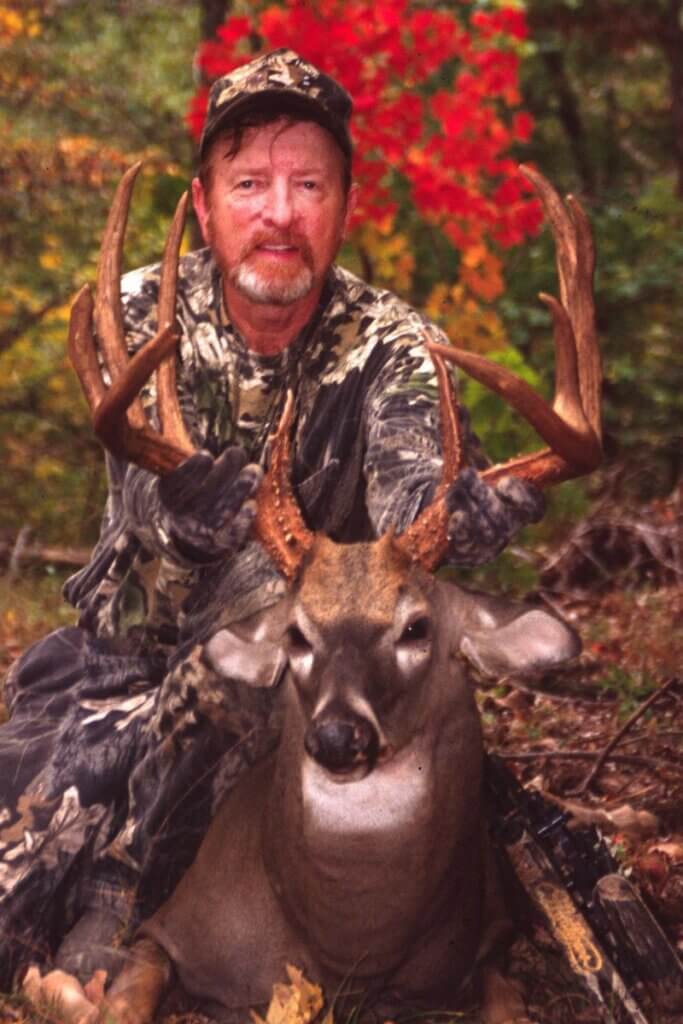
- “had some brush right at the base of my stand that created a wall through which the deer couldn’t see. Therefore, bucks coming from either direction would assume that the deer that they heard calling to them was on another side of the brush, and
- “had the wind in my favor.
“When I first spotted this deer, he was at about 75 yards traveling with two other bucks. The younger bucks were the ones actually coming cautiously to my calling with my grunt call.
“I think the other buck was following his two amigos, which looked to be 1- and 1-1/2-years old. However, the older 3- to 4-year-old buck I wanted to take would have scored 140 points on the Pope & Young.
“I let the two younger bucks pass by my stand and go toward the field crossing. When the older buck was at 20 yards, I made my draw and took a shot at him as he started to take a step forward.
“I’d learned over the years that when a buck took a step forward and was only standing on three legs, then if you released the arrow, the buck couldn’t jump the string. He would fall over.”
“However, a deer standing still could drop down in a heartbeat if you shot, and he heard the string. The arrow would pass over him. The arrow hit the buck right behind his shoulder in his ribs. The buck wheeled ran about 70 yards and then dropped.”
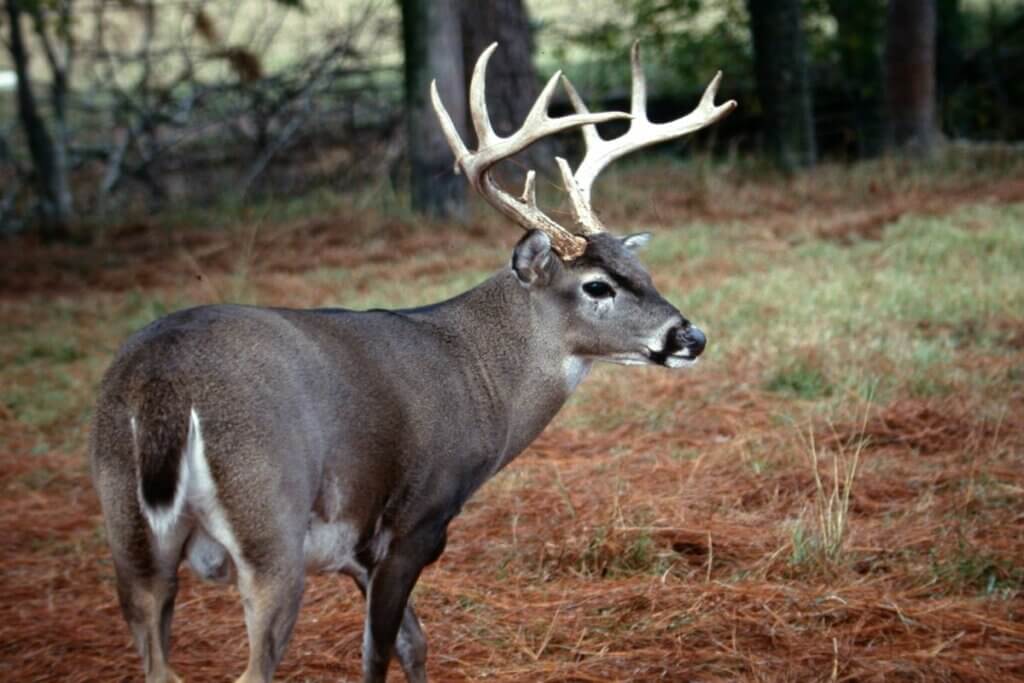
More Advice from Pros You Know in John’s Books
Since deer hunting and deer hunters are drastically changing each year, John interviewed some top deer hunters like Mark Drury, Dr. Larry Marchinton, Dr. Bob Sheppard, Pat Reeve, Gene Wensel, Cody Robbins, Ernie Calandrelli, Brian Murphy and Luke Brewster, who took the world’s largest whitetail, to learn their up-to-date techniques for successfully hunting deer and having more places to hunt.
Too, check out John’s book, “Bowhunting Deer: the Secrets of the PSE Pros,” available now in Kindle, print, and Audible versions.
When you click on these books, notice on the left where Amazon says you can read and hear 10% of the Audible books for free. You can click on Buy the Audible book on the right side of the pages and below the offer for a free Audible trial.
Tomorrow: Hunt Creek Bottom Deer and Doe Stands



